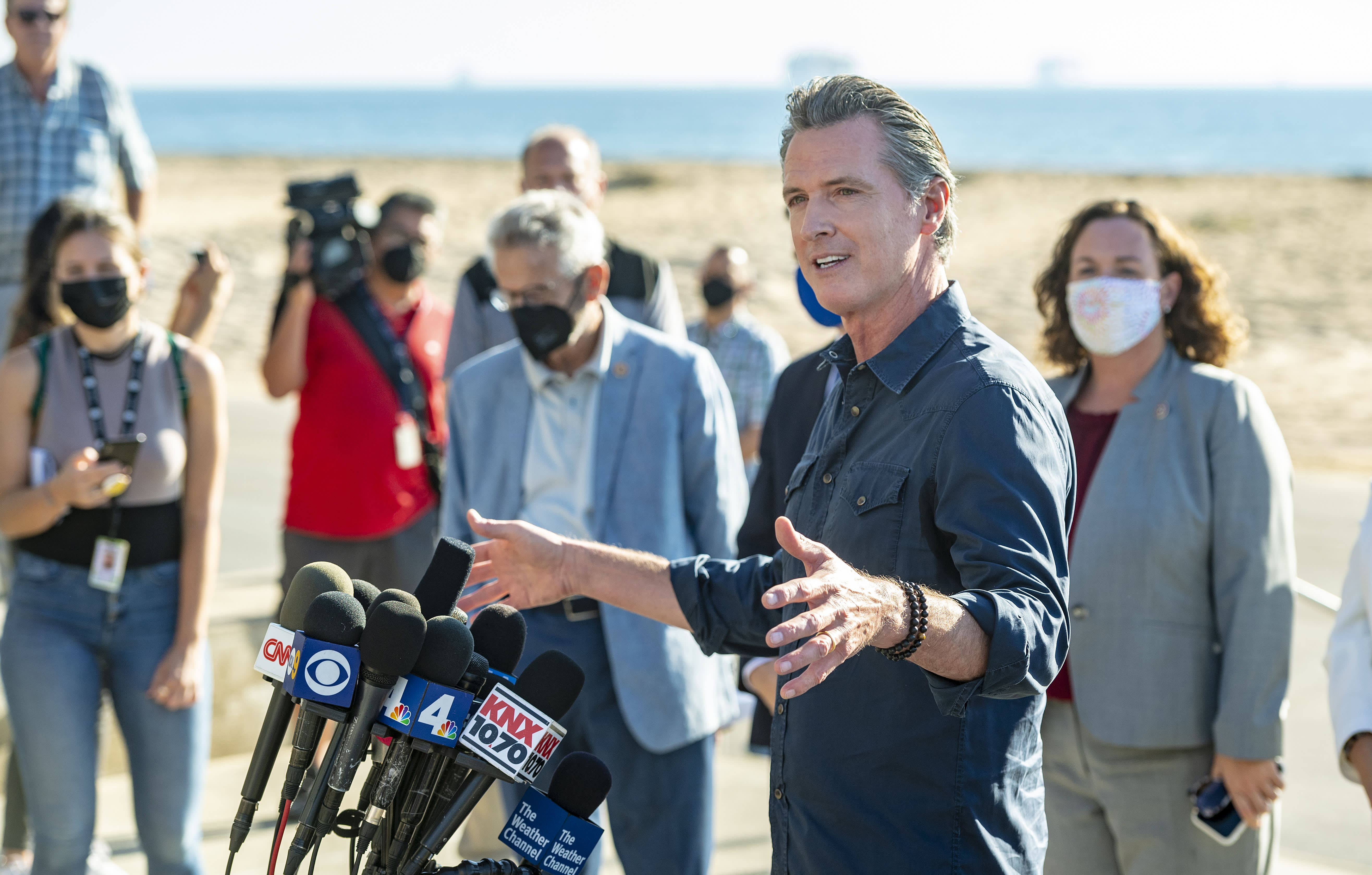
California Gov. Gavin Newsom on Thursday proposed a statewide 3,200-foot buffer zone to separate homes, schools, hospitals and other populated areas from oil and gas wells.
The draft rule, released by the state's oil regulator California Geologic Energy Management Division (CalGEM), would not ban existing wells within those areas but would require new pollution controls.
California is the seventh-largest oil-producing state in the country but has no rule or standard for the distance that active wells need to be from communities. More than 2 million state residents live within 2,500 feet of an operational oil and gas well, and another 5 million, or 14% of the California's population, are within 1 mile, according to an analysis by the non-profit FracTracker Alliance.
People who live near oil and gas drilling sites are at greater risk of preterm births, asthma, respiratory disease and cancer, research shows. Oil drilling disproportionately affects Black and Latino residents in major oil fields like Los Angeles County and Kern County.
The new restrictions could take a couple years to go into effect and will likely face pushback from the state's oil and gas industry. The Western States Petroleum Association and the State Building and Construction Trades Council have opposed a statewide mandate to impose setbacks, arguing that buffer zones will raise fuel costs and harm workers.
"Our reliance on fossil fuels has resulted in more kids getting asthma, more children born with birth defects, and more communities exposed to toxic, dangerous chemicals," Newsom said in a statement. "California is taking a significant step to protect the more than two million residents who live within a half-mile of oil drilling sites, many in low-income and communities of color."
Environmental advocacy groups have long urged the governor to instate a 2,500-foot setback between fossil fuel operations and communities, as well as place an immediate moratorium on all new oil and gas permits in those zones. Legislation to ban fracking and instate a buffer zone failed this year in a state committee vote.
Other oil producing states like Colorado, Pennsylvania and Texas have imposed some form of setback between properties and oil operations.
If adopted, California's 3,200-foot setback would be the largest in the country. Newsom initially directed regulators to study buffer zones around oil wells in 2019, but they didn't meet the December 2020 deadline to release that information.
"The largest statewide buffer zone in the country is a huge victory for frontline communities that have fought for health protections for years," Kassie Siegel, director of the Center for Biological Diversity's Climate Law Institute, said in a statement.
"oil" - Google News
October 22, 2021 at 02:08AM
https://ift.tt/3E3fgUh
California moves to ban oil wells within 3,200 feet of homes and schools - CNBC
"oil" - Google News
https://ift.tt/2PqPpxF
Shoes Man Tutorial
Pos News Update
Meme Update
Korean Entertainment News
Japan News Update
Bagikan Berita Ini















0 Response to "California moves to ban oil wells within 3,200 feet of homes and schools - CNBC"
Post a Comment